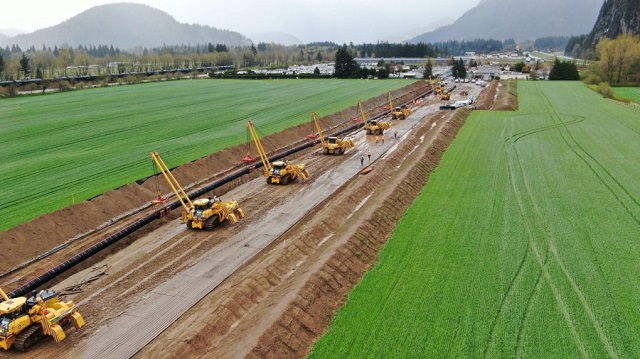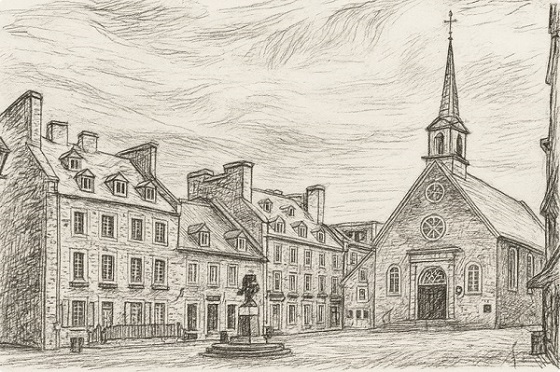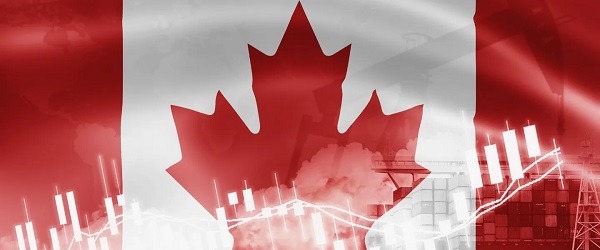Business
A Practical Path to Improved Indigenous Relations
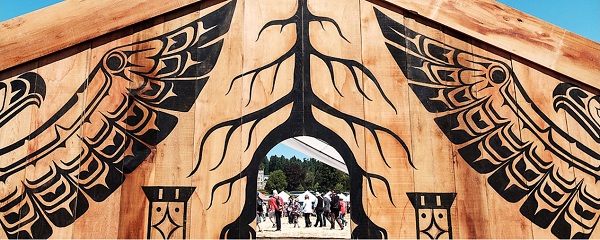
By Tom Flanagan
“Reconciliation” has been the watchword for Canada’s relationship with its Indigenous peoples for the last 10 years. So, how’s that going? Not so well, in my opinion. Canada has apologized profusely for Indian Residential Schools, including imaginary unmarked graves and missing children. As prime minister, Justin Trudeau tripled the Indigenous budgetary envelope, his government committing to pay tens of billions of dollars in reparations for alleged deficiencies not just of residential schools but day schools, Indian hospitals, adoption and child welfare services and other policy failings.
Yet when Prime Minister Mark Carney recently brought in legislation to facilitate construction of desperately needed major projects, prominent First Nations leaders focused on the perceived affront to their powers and privileges, with some threatening to block Carney’s entire initiative by reviving the Idle No More protests and blockades of the 2010s.
Our current impasse arises from 250 years of decisions that are now almost impossible to change because they have been made part of Canada’s Constitution, either by elected politicians or by appointed judges. “Big new ideas” are thus virtually impossible to implement. But there is still room for incremental innovations in public policy that focus primarily on economic opportunities benefiting Indigenous Canadians, i.e., on pursuing prosperity and the good things that come with that.
In my opinion, Canada’s First Nations have two major ways to achieve prosperity. Those bands located near cities and large towns can pursue commercial and residential real estate development, as a number are doing – witness, for example, the large Taza development led by the Tsuut’ina (Sarcee) nation along Calgary’s southwest section of its Ring Road.
Those in more remote locations, meanwhile, can pursue natural resource-based development such as oil and natural gas, hard rock mining, hydroelectricity, fisheries and tourism. Unfortunately, much resource development has been blocked by environmental purists in coalition with the minority of First Nations people opposed in principle to modernization.
Emblematic of this dynamic was the bitter opposition by a small number of First Nations members to the Coastal GasLink natural gas pipeline in northern B.C. that was to feed the new LNG Canada liquefied natural gas terminal at the West Coast port of Kitimat – a project heavily favoured by the Haisla Nation, which has basically staked its economic future on LNG. Despite the opponents’ vandalism and violence, fortunately the pipeline was built and Canada’s first cargo of LNG recently departed Kitimat for markets in East Asia.
So this is clearly an avenue of progress. Indigenous equity ownership of resource projects does not require constitutional changes, and it will help to solidify First Nations’ support for such projects as well as increase the standard of living of participants. With judicious investment, there can more First Nation success stories to rival real estate development at Westbank, B.C. and oil sands service industries at Fort McKay.
Loans and loan guarantees are not without risk, however, and sometimes the risks are great. When offering equity ownership to First Nations, it would be best to concentrate on smaller and medium-sized projects where due diligence is possible and political interference can be minimized.
It also would make sense to diminish First Nations’ current obsession with grievances and reparations. Much of this is derived from Jodi Wilson-Raybould’s “practice directive” issued when she was Trudeau’s Minister of Justice, instructing federal lawyers to prefer negotiation over litigation, i.e., no longer to vigorously defend the Government of Canada’s legal position in court, but essentially to surrender. This document has no constitutional status and can be repealed by a government that realizes how much damage it is doing.
Then there is the reserve system, the bête noire of so many critics. Even as there is no constitutional prospect of abolishing Canada’s system of some 600 mostly small and often economically unviable reserves, there is no good reason for making them artificially attractive places to live, either – as has been done by making them havens from income and sales taxes. This came about through a wrong-headed 1983 Supreme Court decision, Nowegijick v. The Queen, expanding the immunity from property tax conferred by the Indian Act to cover income taxes as well.
But this exemption is based on legislation, not the Constitution; thus, Parliament could change it through ordinary legislation. Ending or reducing the tax haven status could be part of a larger deal to help First Nations participate more fully in the economy through a program of loans and loan guarantees.
These changes are modest, but now is the right time to consider them. It is widely agreed that, even apart from Trumpian threats, Canada needs policy renovation after a decade of Justinian progressivism. The federal debt has doubled, the annual deficit is spiralling out of control, our defence effort is underfunded, and declining labour productivity has affected our ability to pay for basic public services.
Endless moralizing plus grotesque overspending in the name of reconciliation symbolizes the progressive concern with what Friedrich Hayek called “the mirage of social justice” to the detriment of other affairs of state. It’s high time for a course correction in many areas, including Indigenous policy.
The original, full-length version of this article was recently published in C2C Journal.
Tom Flanagan is professor emeritus of political science at the University of Calgary.
Business
Bank of Canada governor warns citizens to anticipate lower standard of living

From LifeSiteNews
“Unless something changes, our incomes will be lower than they otherwise would be.”
Bank of Canada Governor Tiff Macklem gave a grim assessment of the state of the economy, essentially telling Canadians that they should accept a “lower” standard of living.
In an update on Wednesday in which he also lowered Canada’s interest rate to 2.25 percent, Macklem gave the bleak news, which no doubt will hit Canadian families hard.
“What’s most concerning is, unless we change some other things, our standard of living as a country, as Canadians, is going to be lower than it otherwise would have been,” Macklem told reporters.
“Unless something changes, our incomes will be lower than they otherwise would be.”
Macklem said what Canada is going through “is not just a cyclical downturn.”
Asked what he meant by a “cyclical downturn,” Macklem blamed what he said were protectionist measures the United States has put in place such as tariffs, which have made everything more expensive.
“Part of it is structural,” he said, adding, “The U.S. has swerved towards protectionism.”
“It is harder to do business with the United States. That has destroyed some of the capacity in this country. It’s also adding costs.”
Macklem stopped short of saying out loud that a recession is all but inevitable but did say growth is “pretty close to zero” at the moment.
While some U.S. protectionist measures put in place by President Donald Trump have impacted Canada, the reality is that since the Liberals took power in 2015, first under former Prime Minister Justin Trudeau and now under Mark Carney, government spending has been out of control, according to experts. Rising inflation is rampant.
Canadian taxpayers are already dealing with high inflation and high taxes, in part due to the Liberal government overspending and excessive money printing, and even admitting that giving money to Ukraine comes at the “taxpayers’” expense.
As reported by LifeSiteNews, Carney boldly proclaimed earlier this week that his Liberal government’s upcoming 2025 budget will include millions more in taxpayer money for “SLGBTQI+ communities” and “gender” equality and “pride” safety.
As reported by LifeSiteNews, the Canadian Taxpayers Federation (CTF) recently blasted the Carney government for spending $13 million on promotional merchandise such as “climate change card games,” “laser pens and flying saucers,” and “Bamboo toothbrushes” since 2022.
Canadians pay some of the highest income and other taxes in the world. As reported by LifeSiteNews, Canadian families spend, on average, 42 percent of their income on taxes, more than food and shelter costs. Inflation in Canada is at a high not seen in decades.
Business
Canada’s economic performance cratered after Ottawa pivoted to the ‘green’ economy
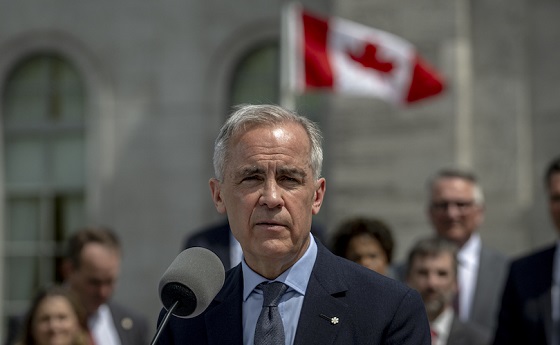
From the Fraser Institute
By Jason Clemens and Jake Fuss
There are ostensibly two approaches to economic growth from a government policy perspective. The first is to create the best environment possible for entrepreneurs, business owners and investors by ensuring effective government that only does what’s needed, maintains competitive taxes and reasonable regulations. It doesn’t try to pick winners and losers but rather introduces policies to create a positive environment for all businesses to succeed.
The alternative is for the government to take an active role in picking winners and losers through taxes, spending and regulations. The idea here is that a government can promote certain companies and industries (as part of a larger “industrial policy”) better than allowing the market—that is, individual entrepreneurs, businesses and investors—to make those decisions.
It’s never purely one or the other but governments tend to generally favour one approach. The Trudeau era represented a marked break from the consensus that existed for more than two decades prior. Trudeau’s Ottawa introduced a series of tax measures, spending initiatives and regulations to actively constrain the traditional energy sector while promoting what the government termed the “green” economy.
The scope and cost of the policies introduced to actively pick winners and losers is hard to imagine given its breadth. Direct spending on the “green” economy by the federal government increased from $600 million the year before Trudeau took office (2014/15) to $23.0 billion last year (2024/25).
Ottawa introduced regulations to make it harder to build traditional energy projects (Bill C-69), banned tankers carrying Canadian oil from the northwest coast of British Columbia (Bill C-48), proposed an emissions cap on the oil and gas sector, cancelled pipeline developments, mandated almost all new vehicles sold in Canada to be zero-emission by 2035, imposed new homebuilding regulations for energy efficiency, changed fuel standards, and the list goes on and on.
Despite the mountain of federal spending and regulations, which were augmented by additional spending and regulations by various provincial governments, the Canadian economy has not been transformed over the last decade, but we have suffered marked economic costs.
Consider the share of the total economy in 2014 linked with the “green” sector, a term used by Statistics Canada in its measurement of economic output, was 3.1 per cent. In 2023, the green economy represented 3.6 per cent of the Canadian economy, not even a full one-percentage point increase despite the spending and regulating.
And Ottawa’s initiatives did not deliver the green jobs promised. From 2014 to 2023, only 68,000 jobs were created in the entire green sector, and the sector now represents less than 2 per cent of total employment.
Canada’s economic performance cratered in line with this new approach to economic growth. Simply put, rather than delivering the promised prosperity, it delivered economic stagnation. Consider that Canadian living standards, as measured by per-person GDP, were lower as of the second quarter of 2025 compared to six years ago. In other words, we’re poorer today than we were six years ago. In contrast, U.S. per-person GDP grew by 11.0 per cent during the same period.
Median wages (midpoint where half of individuals earn more, and half earn less) in every Canadian province are now lower than comparable median wages in every U.S. state. Read that again—our richest provinces now have lower median wages than the poorest U.S. states.
A significant part of the explanation for Canada’s poor performance is the collapse of private business investment. Simply put, businesses didn’t invest much in Canada, particularly when compared to the United States, and this was all pre-Trump tariffs. Canada’s fundamentals and the general business environment were simply not conducive to private-sector investment.
These results stand in stark contrast to the prosperity enjoyed by Canadians during the Chrétien to Harper years when the focus wasn’t on Ottawa picking winners and losers but rather trying to establish the most competitive environment possible to attract and retain entrepreneurs, businesses, investors and high-skilled professionals. The policies that dominated this period are the antithesis of those in place now: balanced budgets, smaller but more effective government spending, lower and competitive taxes, and smart regulations.
As the Carney government prepares to present its first budget to the Canadian people, many questions remain about whether there will be a genuine break from the policies of the Trudeau government or whether it will simply be the same old same old but dressed up in new language and fancy terms. History clearly tells us that when governments try to pick winners and losers, the strategy doesn’t lead to prosperity but rather stagnation. Let’s all hope our new prime minister knows his history and has learned its lessons.
-

 Alberta18 hours ago
Alberta18 hours agoFrom Underdog to Top Broodmare
-

 International1 day ago
International1 day agoPrince Andrew banished from the British monarchy
-
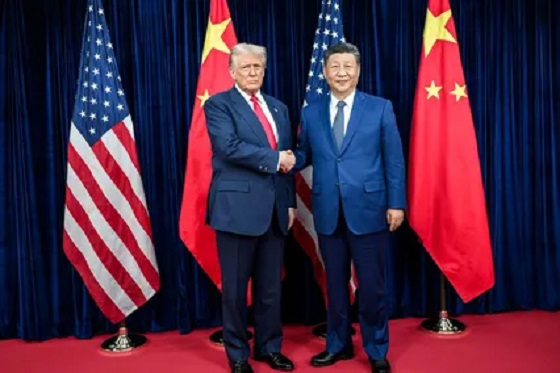
 Business1 day ago
Business1 day ago“We have a deal”: Trump, Xi strike breakthrough on trade and fentanyl
-

 Business2 days ago
Business2 days agoCanada’s attack on religious charities makes no fiscal sense
-
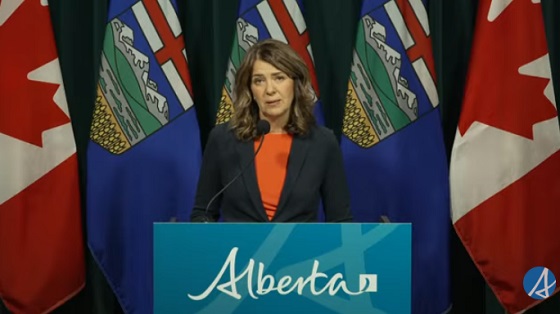
 Alberta1 day ago
Alberta1 day agoProvince orders School Boards to gather data on class sizes and complexity by Nov 24
-

 Bruce Dowbiggin2 days ago
Bruce Dowbiggin2 days agoGet Ready: Your House May Not Be Yours Much Longer
-

 Crime1 day ago
Crime1 day agoCanada Seizes 4,300 Litres of Chinese Drug Precursors Amid Trump’s Tariff Pressure Over Fentanyl Flows
-

 National1 day ago
National1 day agoWatchdog Presses Ottawa to Release Hidden Lobbying Rulings





